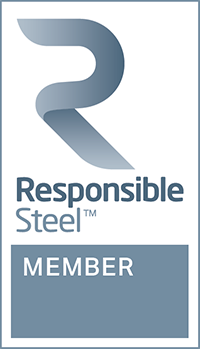History on Your Finger Tips: How Iron and Steel Fuelled the Industrial Revolution
The global economy has grown by leaps and bounds in the last couple of centuries and steel has had an indispensable role in this development. But what do we know of its origins?
To know steel, we must first understand iron, for these two metals are nearly one and the same. Steel contains 98-99% of iron concentration or more. The small remainder is carbon, which makes a major difference in the metal’s properties. Now let’s go back a little in time to know how it all started.
In the late 18th century, during the Industrial Revolution in England, the invention of the steam engine by James Watt enabled the blasting of air into the blast furnace with a machine. This made the mass production of iron possible. Although iron was the main driver of this revolution, it was by no means a new material. It had been around for nearly 3000 years since the Iron Age. For many centuries, the British had converted their iron ores to iron and steel by heating the raw material with charcoal obtained from trees.
By the mid-eighteenth century, however, the iron industry was in a downward trajectory. Iron workers required charcoal to smelt the iron ore, but charcoal was in short supply as the wood required to make charcoal was expensive. This posed an industrial problem. What was now required was a method by which iron could be smelted in high tonnage quantities. It needed a better heat source than charcoal, possibly a new fuel for treating iron ores.
The fuel they found was coal. In the course of a century, substantial change occurred as coal replaced charcoal as the fuel for smelting process. Coke proved to be a far superior material for converting iron ore to iron and then steel. It was obtained by heating coal in the absence of air. The materials were now cost efficient and sufficient in supply. The result of this change revolutionised the industry and the use of iron and steel.
The conversion of the iron and steel business from charcoal to coke was accompanied, however, by several new technical problems, like the high concentration of sulphur in coal, which along with other impurities makes iron brittle. Steel was a stronger and less brittle than iron, but it was more difficult to make. This encouraged the development of even more new inventions.
Along the way, a key discovery was that the amount of carbon present in the iron controlled not only its melting point but also its properties. By controlling the additions of carbon through the use of coke, a form of iron was made called steel which could be cast on an industrial scale.
From iron to steel
Around 1856, Henry Bessemer conducted a series of classic experiments for burning off the carbon in the iron by trying various designs of furnace. At one point in his work, he noticed that he didn’t need to heat or supply fuel to the charge of molten iron when trying to make steel: the 4% carbon present in the cast iron would burn, and produce heat, by blowing air through the molten metal after it was removed from the furnace, keeping the metal hot and fluid and reducing the carbon content as well. This led to the invention of the Bessemer's process.
These critical advancements made the iron and steel industry flourish. This was especially evident in the railways where the speed, weight, and quantity of railway traffic was limited by the strength of wrought iron rails. Switching to steel thus positively transformed the transport sector, due to their greater strength and durability and ability to handle the increasingly heavy and faster cars and engines. This led to the mushrooming of many other manufacturing activities dependent on steel and/or transportation. It would then be safe to reason that iron and steel effectively fuelled the industrial revolution. Europe, and Britain in particular, was the pivot of this revolution largely because of their large supply of coal and iron ore.
After 1890, the Bessemer process was gradually supplanted by open-hearth steel-making. The crucible process further enhanced the production of high-quality alloy steel in the 20th century.
Today, India is among the largest producers and consumers of steel worldwide. As much as it is strong, steel is also fully recyclable, which makes it a potent candidate to propel a sustainable present and future.




